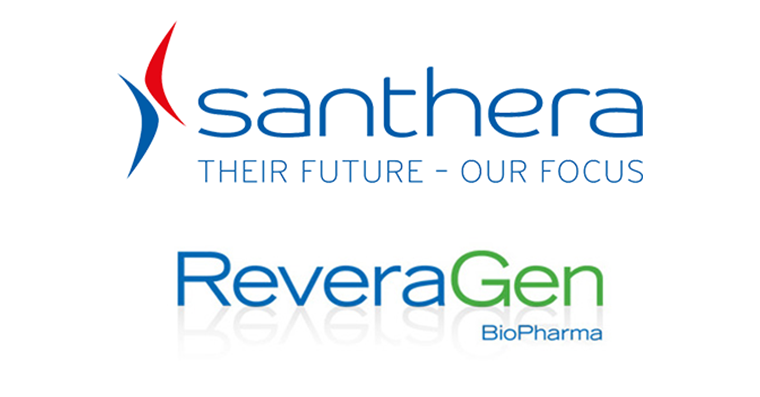
Santhera and ReveraGen have shared an update on the evidence of clinical efficacy and safety of vamorolone in participants with Duchenne, based on the positive outcome of the pivotal Phase 2b VISION-DMD study and additional Phase 2a data.
A rolling NDA submission to the FDA for vamorolone for the treatment of Duchenne is planned to start at the end of this month.
Read the press release from Santhera & ReveraGen
Santhera and ReveraGen to Present Efficacy and Safety Data with Vamorolone at 2022 Muscular Dystrophy Association Conference
Pratteln, Switzerland, and Rockville, MD, USA, March 15, 2022 – Santhera Pharmaceuticals (SIX: SANN) and ReveraGen BioPharma, Inc announce presentations of efficacy and tolerability data with vamorolone in Duchenne muscular dystrophy (DMD) at the 2022 Muscular Dystrophy Association (MDA) Clinical & Scientific Conference (March 13-16, 2022, Nashville, TN, USA). A rolling NDA submission to the U.S. FDA for vamorolone for the treatment of DMD is planned to start at the end of March 2022.
Evidence of clinical efficacy and safety of vamorolone in patients with DMD is based on the positive outcome of the pivotal Phase 2b VISION-DMD study and additional Phase 2a data covering a vamorolone treatment period of up to 30 months. In the VISION-DMD study, vamorolone 6 mg/kg/day met the primary endpoint at week 24, showed sustained efficacy across multiple endpoints over 48 weeks and was well tolerated with a favorable safety profile. In study participants starting on prednisone 0.75 mg/kg/day and switching to vamorolone 6 mg/kg/day after 24 weeks, efficacy was also maintained across all functional endpoints and improvements were observed on multiple safety parameters. Importantly, stunting of growth and negative effect on biomarkers of bone health observed with prednisone over the initial 24 weeks were reversed during treatment with vamorolone over the latter 24 weeks of the study. These findings align with vamorolone’s longer term durable efficacy and safety profile with the potential to offer an alternative to current standard of care. The long-term use of standard corticosteroids is associated with a series of clinically relevant side effects that often limit their use and reduce patients’ quality of life considerably.
The data will be shared at the MDA Conference as follows:
Presentation
“Vamorolone versus placebo and prednisone in Duchenne muscular dystrophy: 24-week double-blind trial VBP15-004”–March 16, 09:50-10:05 am, Tennessee Ballroom
Posters
“Delayed start analysis of efficacy outcomes in placebo to vamorolone crossover participants in VBP15-004” – poster #89
“Efficacy and safety of vamorolone during 48-week treatment in patients with Duchenne Muscular Dystrophy (DMD) in VBP15-004 study” – virtual poster
“Feasibility of switch from prednisone to vamorolone in patients with DMD in VBP15-004 study” –virtual poster
“Vamorolone vs corticosteroid real-world experience: Comparisons of 2-year treatment with NorthStar UK Network and CINRG Duchenne Natural History Study” – virtual poster
Abstracts are available on the MDA website under this link.
Santhera is also hosting an on-site scientific exhibit (booth #311, located in Ryman Hall B1-2) at the conference where medical representatives of the Company will be present throughout the conference.
Santhera is planning to file a new drug application (NDA) for vamorolone in DMD with the US FDA starting at the end of March 2022 (rolling review planned). Vamorolone has been granted Orphan Drug status in the US and in Europe for DMD, and has received Fast Track and Rare Pediatric Disease designations by the US FDA and Promising Innovative Medicine (PIM) status from the UK MHRA for DMD. Vamorolone is an investigational medicine and is currently not approved for use by any health authority.
About Vamorolone
Vamorolone is a drug candidate with a novel mode of action that binds to the same receptor as corticosteroids but modifies its downstream activity and as such is a dissociative agonist [1-3]. This mechanism has the potential to ‘dissociate’ efficacy from typical steroid safety concerns and therefore vamorolone could emerge as a promising alternative to existing corticosteroids, the current standard of care in children and adolescents with DMD. In the pivotal VISION-DMD study, vamorolone met the primary endpoint Time to Stand (TTSTAND) velocity versus placebo (p=0.002) at 24 weeks of treatment and showed a good safety and tolerability profile. Compared to prednisone, vamorolone showed comparable efficacy, improvements on multiple safety parameters (including a reversal of growth impairment seen during prednisone treatment and a reduction of behavioral changes) and was associated with fewer adverse events. In clinical studies, vamorolone was generally well tolerated. The most commonly reported adverse events versus placebo from the VISION-DMD study were cushingoid features, vomiting and vitamin D deficiency. Adverse events were generally of mild to moderate severity.



 by: Parent Project Muscular Dystrophy
by: Parent Project Muscular Dystrophy

